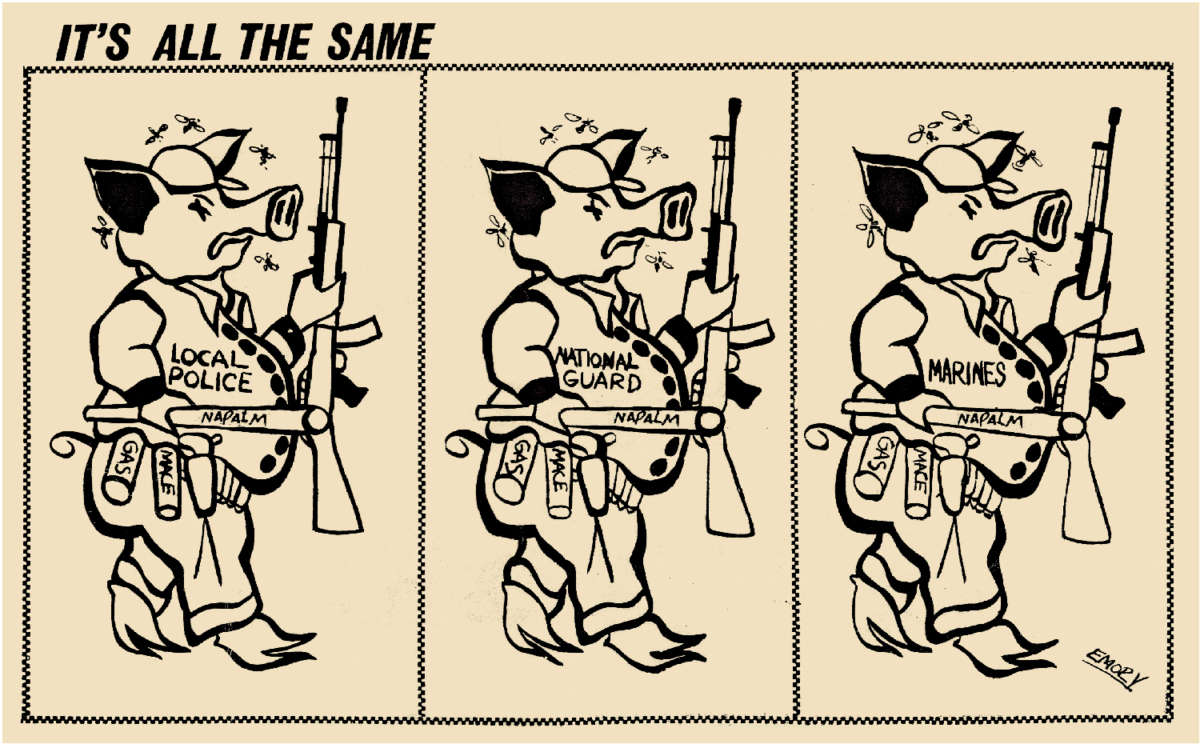The Black Panther Party (BPP), originally the Black Panther Party for Self-Defense, was co-founded in 1966 by Bobby Seale and Huey Newton in Oakland, California. Motivated by outrage against police abuse in Black and Brown neighborhoods, Seale and Newton compiled a Ten-Point Program for their new organization.
Representing the vanguard of the revolution throughout the 60s and 70s, the BPP was immortalized for its iconic, powerful imagery of armed Black men and women dressed in leather and berets, determined to protect communities from vigilante and institutional forms of white supremacy.
However, safeguarding the Black community was only one tactic in the BPP revolutionary strategy, which included free breakfast for school children, health clinic programs, and a sophisticated educational agenda with teach-ins and an official media organ — The Black Panther newspaper.
In the following interview, Truthout speaks with Emory Douglas, artist, designer, producer of The Black Panther newspaper, and minister of culture for the BPP from 1967 until The Black Panther ceased publication in the early ‘80s. Douglas’s iconic artwork and design were a centerpiece of the BPP’s highly successful messaging and outreach, which inspired revolutionaries in the United States and the world. Douglas speaks of the history of The Black Panther newspaper as a tool of empowerment, the aims and techniques of his artwork and design, and how these relate to current mediums employed during present uprisings.
Yoav Litvin: Co-founder and Minister of Defense of the BPP Huey Newton said: “When the slave kills the slave master it acts as a cleansing process. Because then a man is ‘born’ and an oppressor is gone.” What have been your goals with your art? Does it serve to kill the slave master, transform him, or both?
Emory Douglas: My art is intended to connect to an audience, to the masses. It appeals to victims of oppression, with a focus on brothers and sisters in Black communities, but not exclusively.
The Black Panther was a community newspaper, which told the story from our perspective. It focused on a class of people who were not necessarily readers, but rather learned through observation and participation. The headlines, captions, artwork and photos reflected the gist of the drawn-out articles and therefore appealed to those who were not able to or going to read them.
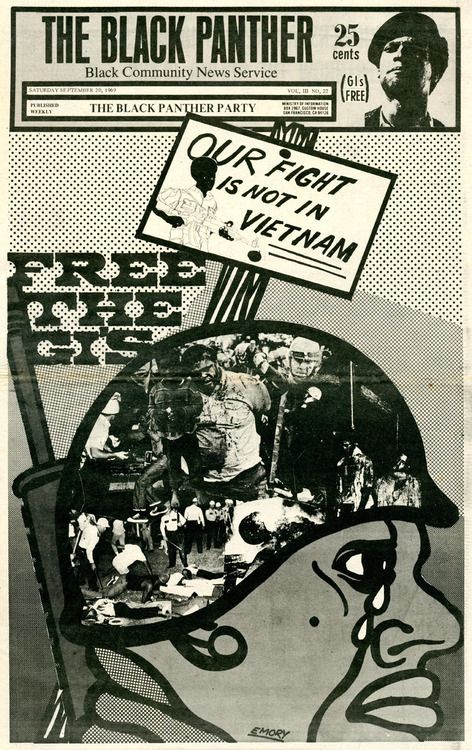
My art for The Black Panther combined various mediums to help convey our messaging. These included pen and ink original drawings collaged with photography and inexpensive graphic arts methodologies — mimeographs, photostats, prefabricated press oh types and screentones, along with offset printing for the newspaper.
The artwork and newspaper got the attention of police early on. A man claiming to be an art dealer called me at the BPP communal housing space showing interest in my art. I knew he was police because the number was unlisted. Later on that week, the same person called the BPP central headquarters office asking to speak to me and I had comrades listen to the conversation on another phone line while the police pretended to be an art dealer interested in my work. He told me he would make me rich and that they wanted me to meet them at the hotel they were staying at in San Francisco. I told him twice I was not interested, he became frustrated and I hung up the phone.
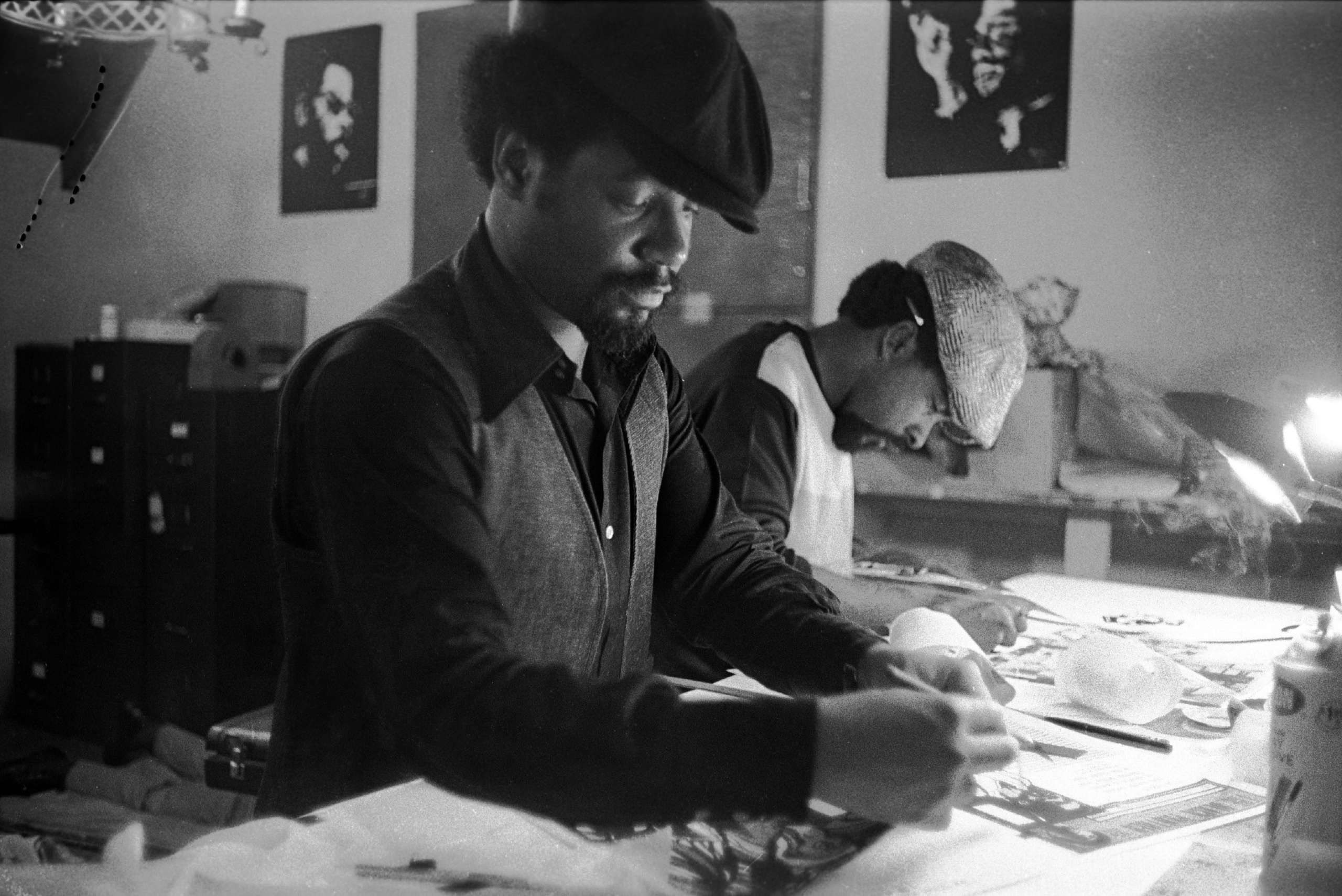
My art also served to support BPP programs such as the free breakfast for schoolchildren. A gallery in Los Angeles which focused on social justice issues exhibited my poster art and we used the show to raise funds.
How did you arrive at the panther and the pig as positive and negative representations?
The image of the black panther was first adopted by the Lowndes County Freedom Organization (LCFO) in Alabama in 1966 after the 1965 Voting Rights Act became law. The black panther was conceived as a response to the Alabama Democratic Party symbol of a white rooster, which stood for white supremacy.
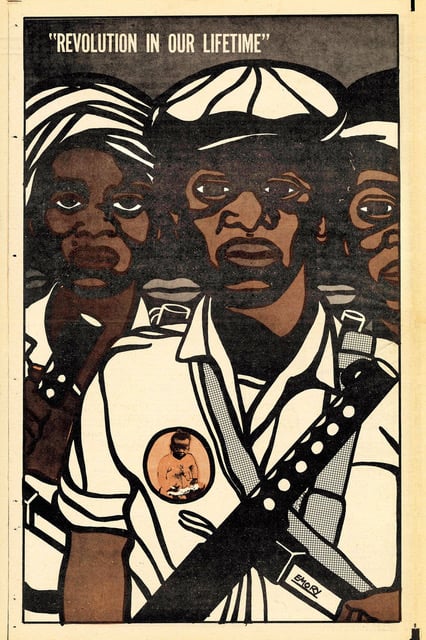
Huey Newton used to say that the black panther was an animal that would not attack unless it felt in danger and only then it defended itself.
Eldridge Cleaver, who later became the BPP’s minister of information, was in contact with members of the Student Nonviolent Coordinating Committee (SNCC) who were involved in the campaign in Alabama, such as Stokely Carmichael [later known as Kwame Ture], as part of his regular travel to Atlanta, Georgia, at the time.
Because of Huey Newton and Bobby Seale’s great respect for SNCC they asked Eldridge to seek their official permission to continue using the black panther as a symbol for the BPP. Stokely Carmichael approved.
Both Bobby Seale and Huey became familiar with Eldridge Cleaver’s writings while in prison.
Huey and Bobby first met Eldridge Cleaver when he worked as a writer/reporter for Ramparts Magazine. However, because he was on parole, he could only be around the BPP in that official capacity, otherwise he would have been in violation of his parole and sent back to prison. They were eventually able to recruit him as a journalist for The Black Panther newspaper.
We defined the pig (police) as “a low natured beast that has no regard for law, justice, or the rights of people; a creature that bites the hand that feeds it; a foul, depraved traducer, usually found masquerading as the victim of an unprovoked attack.”
The many images portraying the pigs encountering provocative retributions in reaction to state-sponsored violence were quickly picked up around the world, transcending the African-American community and becoming international symbols that defined the oppressor by its victims.
Though associated with police, images of pigs represented fascists in general to many in the Black community and beyond. At the same time, the images evoked feelings of humor, disgust and a form of violent reckoning with injustice associated with fascist elements.
Talk about the media landscape back in the days of The Black Panther compared to today. What does it demonstrate regarding differences in struggles?
In the late ‘60s and ‘70s, there were many community media operations that reported on the adverse conditions throughout the U.S.
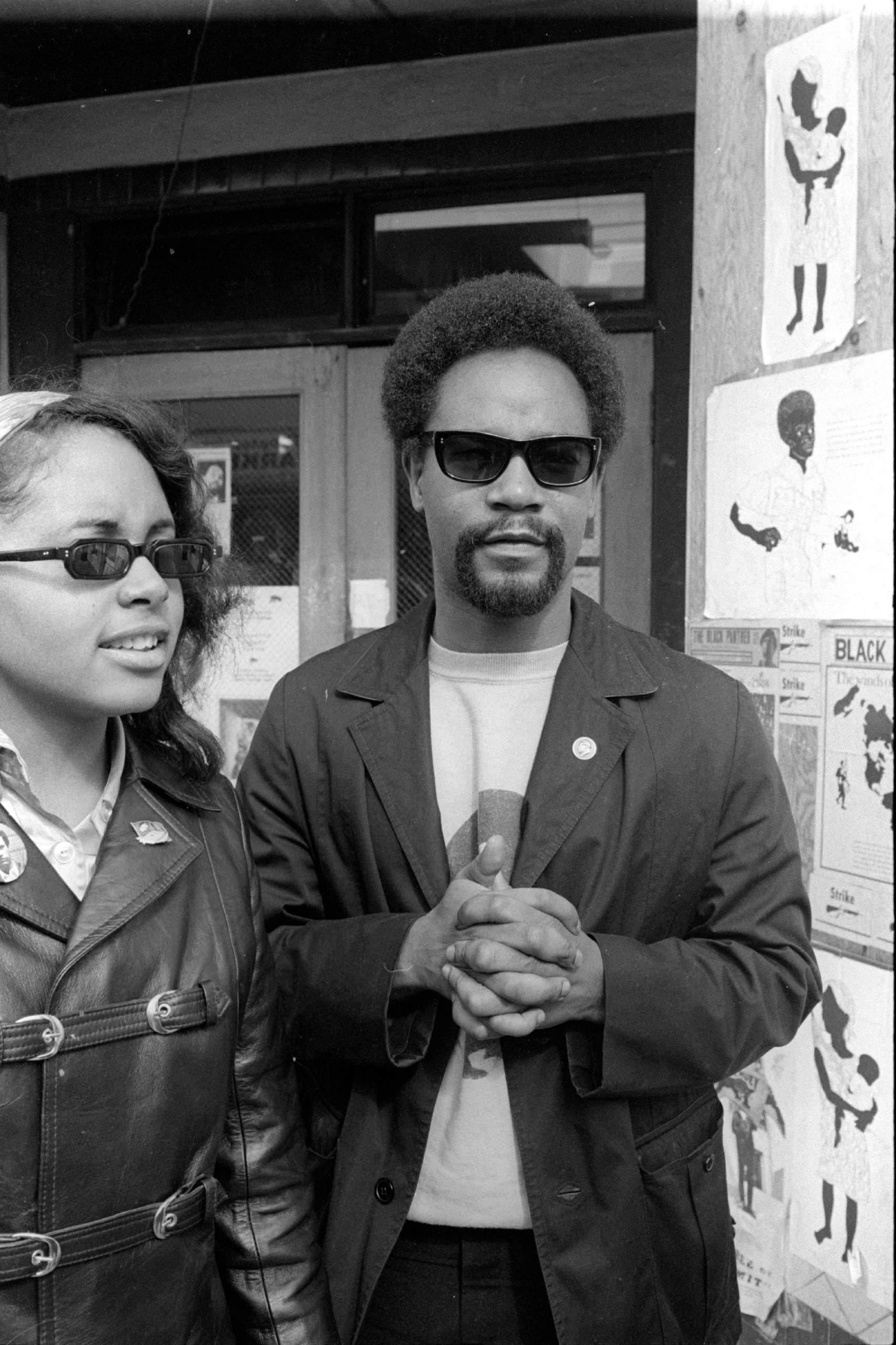
The Black Panther newspaper was published weekly and had a print run of 100,000 with a 400,000 readership around the world at its peak. People globally were interested in the uncensored, factual, hard-hitting and provocative approach to the information.
Today anyone with access can get information in real time or whenever desired on the internet. This becomes even more important during the COVID-19 pandemic while sheltering in place.
In contrast to today, the BPP relied on direct, physical connections to people in our communities, learning first hand of their concerns and needs from our 49 chapters and branches.
That said, the instant ability to record and transmit information and images affords new opportunities to view and connect with police brutality and other injustices as they occur. The easy accessibility to information forces all sectors of society to reckon with the sort of racism historically reserved to Black, Brown and Native American communities.
The connections between racist oppression and capitalism are now in plain sight.
Could you share a story from the active period of the BPP, which showed the power and impact of your art?
Police officers became psychologically affected by our representations of them as pigs.
In 1974, we could see this psychological impact; police from Oakland and San Francisco got together and started an annual football match between law enforcement agencies called the “Pig Bowl” in an attempt to defend their image, with funds raised toward charity.
However, people of all ages politely and accurately continued to use the term. It served to emphasize the gulf in trust between our communities and law enforcement. Today in certain state jurisdictions calling police officers “pigs” is a misdemeanor.
As a radical revolutionary organization, the BPP forced the mainstream political system to deal with basic quality-of-life concerns within the Black community. One such effect was a beginning of a process of inclusion into the capitalist system, including law enforcement, that has historically excluded us.
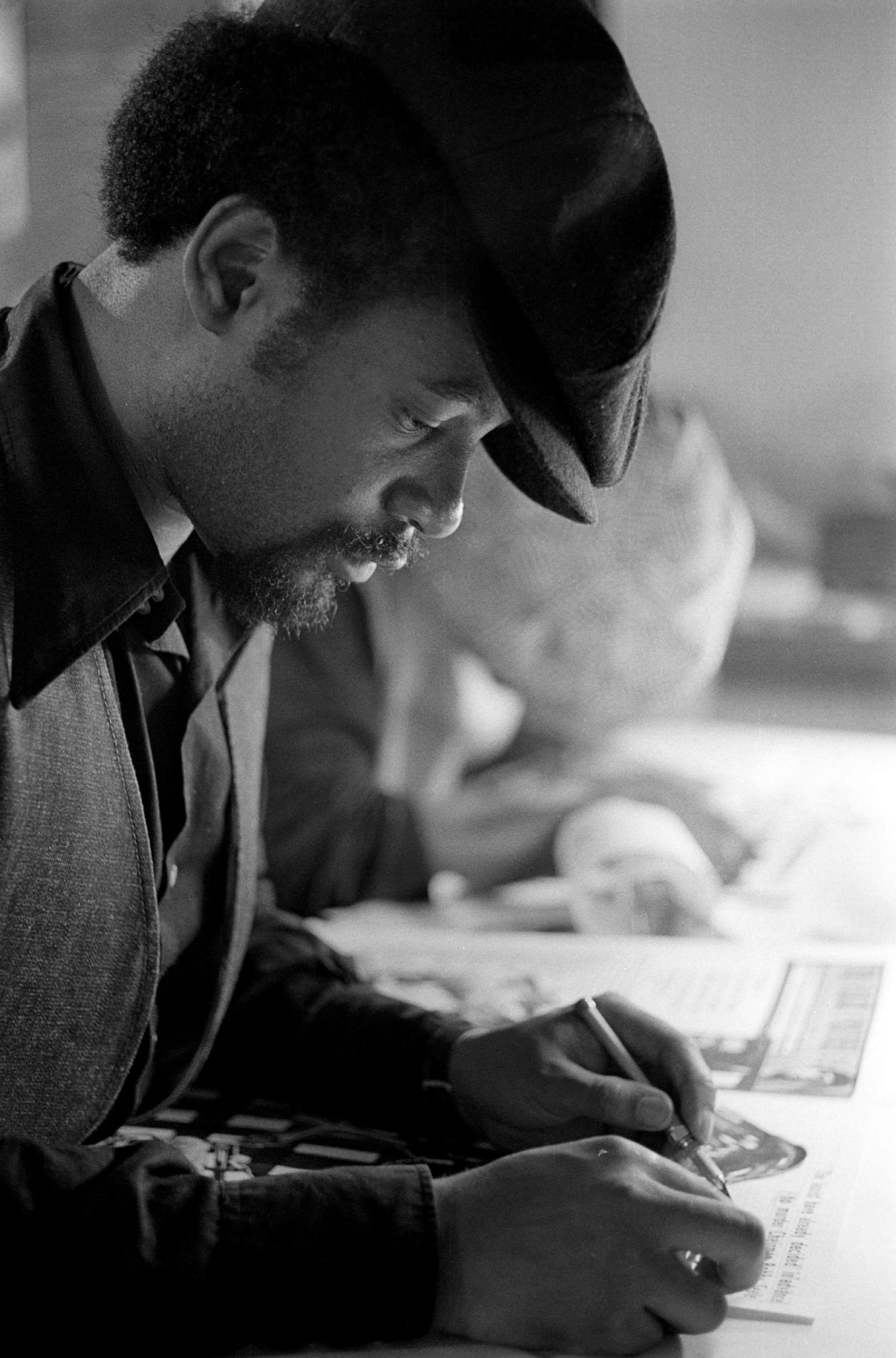
In my art, I reflected the party’s demand for community control of police, which required that law enforcement who patrolled our communities lived in our communities and would thus be held accountable for their actions and abuse.
Talk about the retaliation of the state against the BPP from your standpoint as minister of culture.
The Police, FBI, CIA, and other government agencies targeted the BPP, assassinating members and imprisoning many others. See Fred Hampton’s assassination in Chicago, the 16- hour-long shootout with police in L.A., the murder of 17-year-old Lil’ Bobby Hutton who Huey and Bobby mentored and got permission from his family to join the BPP when he was 15 years of age, the case of political prisoner Mumia Abu-Jamal who was the deputy minister of information of the Philadelphia chapter of the BPP when he was just 15 years of age and is still a political prisoner along with many other BPP freedom fighters.
In addition to direct assaults, these organizations targeted our community work and programs, including The Black Panther newspaper, which the government also claimed represented an internal threat to security of the United States.
Many of these efforts involved COINTELPRO (Counterintelligence Program), an FBI program which spent tens of millions of dollars to discredit and destroy the BPP by any means necessary. They had a special unit within the FBI called “Racial Matters” and you had to dislike Black people in order to be part of it.
We found out the printer of our newspapers would let the FBI come in and read content before it was printed. We would send comrades to the press to read the paper as it came off the press, making sure it was all there. There were a few times [when] texts were missing and we’d have to stop the presses, reinsert material and reprint.
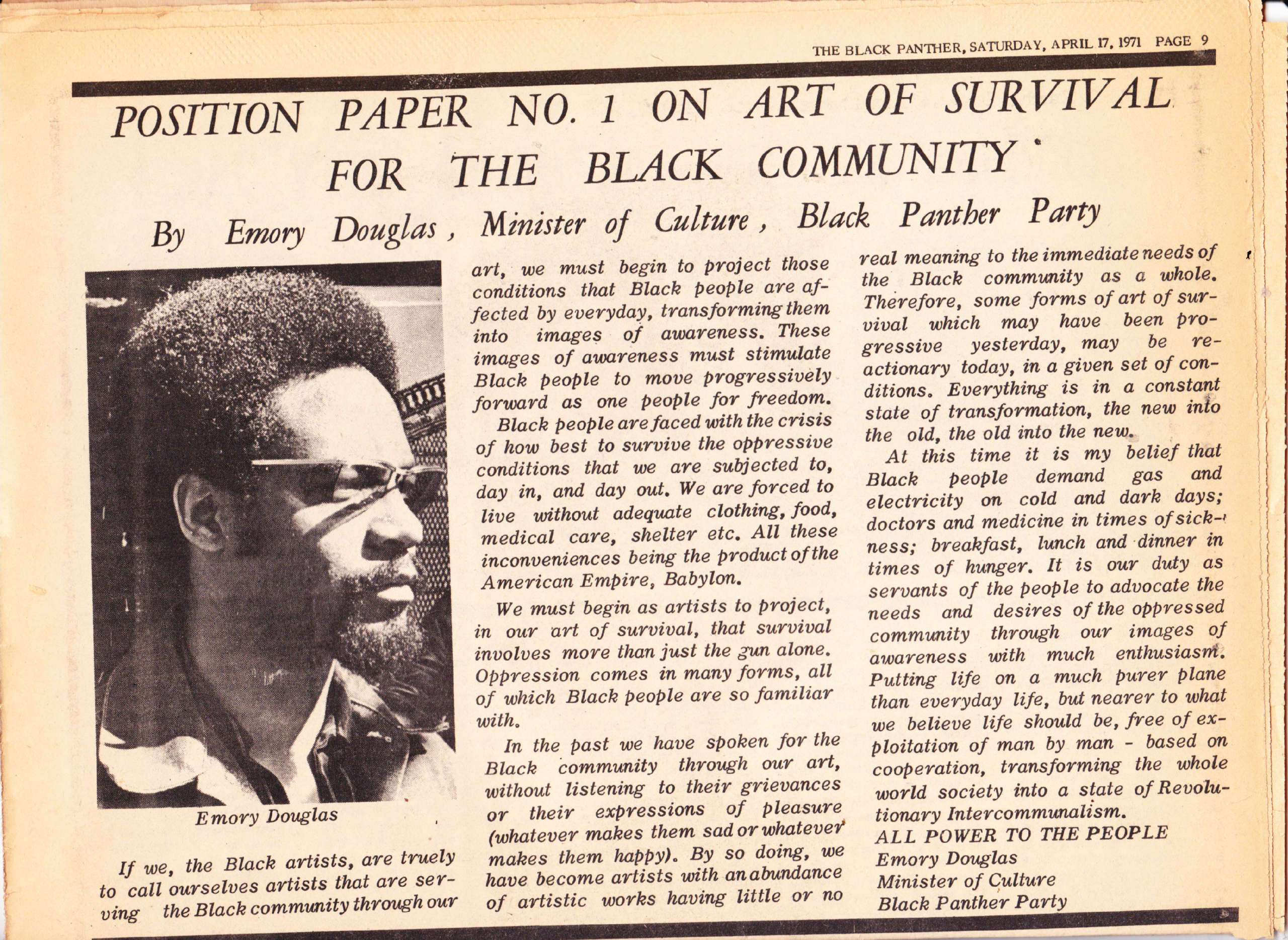
How do you see the events in the streets since George Floyd’s murder? Have efforts at reform failed?
The murder of George Floyd was the spark that started the prairie fire. COVID-19 exposed the government’s indifference to the people’s needs. The blatant racism and corruption of past and present U.S. administrations have created a toxic and flammable environment in which a large segment of the American population has reached a tipping point.
Yes, reform has certainly failed. Reform is just another word for pacification. It is a method of appeasement of certain classes within oppressed communities.
How did your artwork for the BPP relate to revolutionary struggles abroad?
My art featured visual imagery on a range of anti-imperialist struggles and revolutionary movements here and around the world.
In the masthead of The Black Panther, we often featured revolutionary leaders from around the world. Eldridge Cleaver at the international wing of the BPP in Algeria continued fostering relationships with many revolutionary movements.
By 1969, Bobby Seale had attended the international conference against the Vietnam war in Canada. I recall when Bobby Seale and comrade Elbert “Big Man” Howard used to travel to Scandinavia to talk with U.S. draft resistors who’d sold our papers.
I became aware that some Cuban artists were reading our paper and had repurposed a few of my artworks from inside the BPP newspaper and from several political posters I had created, and transformed them into beautiful political posters. They sent them all over the world in solidarity with the third world people’s struggles.
When we decided to stop production in the early ‘80s, we gave our printing equipment to representatives of one of the African liberation movements.
Talk about your current projects.
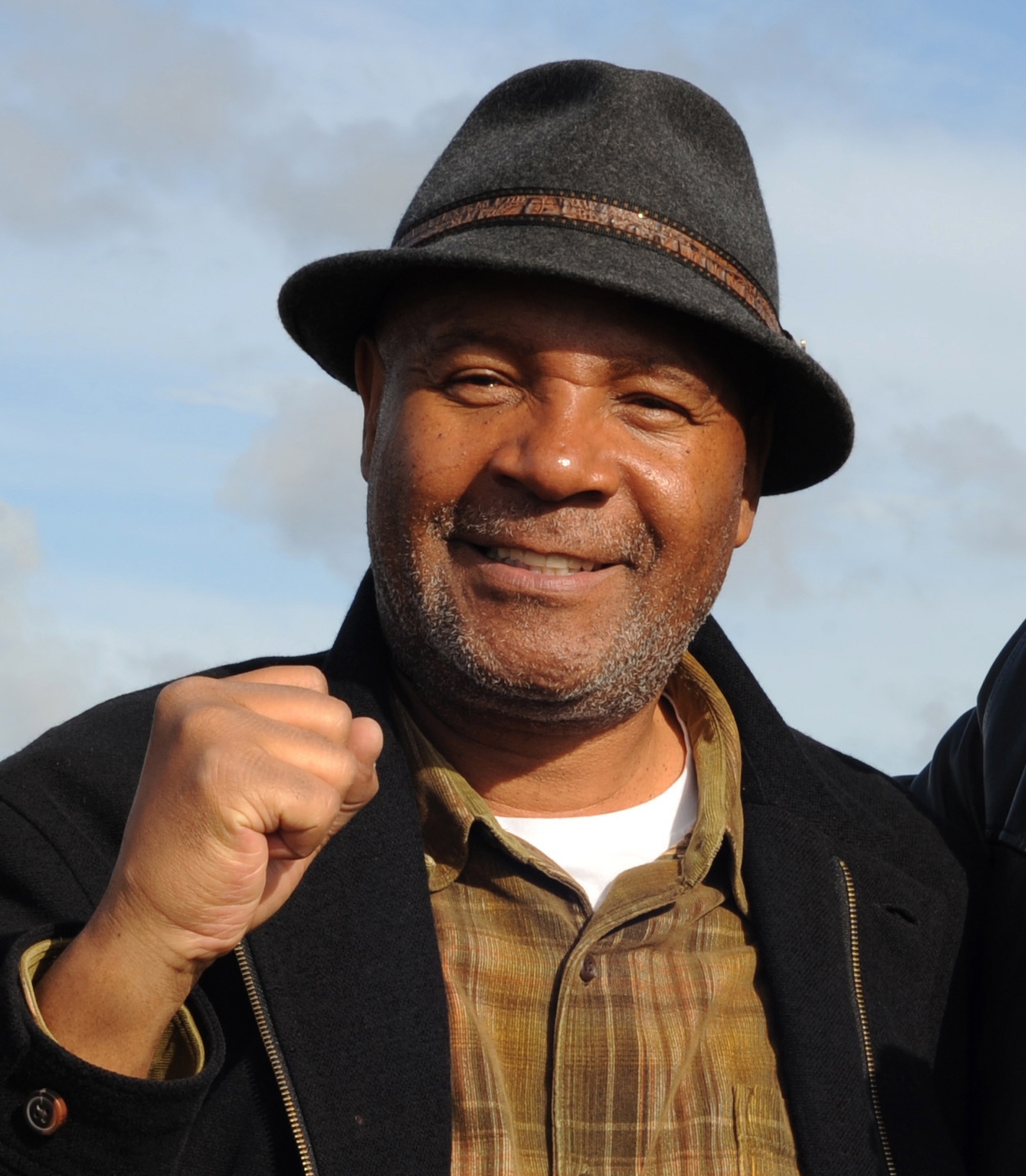
I’ve had many exhibits around the world. For example, in Chiapas, Mexico, several Zapatista women collectives made embroideries of my artwork. In 2011, I collaborated with Australian Aboriginal artists on several occasions, both in Australia and in Amsterdam. I’ve also had exhibitions in Bogota, Columbia; São Paulo, Brazil; and Auckland, New Zealand, to name several.
Before the current travel restrictions, I traveled a lot doing art related talks about the history behind my art for the BPP and some of my more recent works. I also recently collaborated with Spike Lee on his new movie, Da 5 Bloods.
I have been engaged in Palestine solidarity work for a while. I contributed to an Oakland Artists Palestine Solidarity mural and in 2016, I visited Palestine as part of a delegation, which included former U.S.-held political prisoners and social prisoners, prison abolitionists, trade unionists and university professors. Ours was the first U.S. delegation to Palestine to focus specifically on political imprisonment and solidarity between Palestinian and U.S. prisoners. Our delegation also focused on recent labor struggles in Palestine for bread and dignity, and on the struggles of Palestinian intellectuals to assert the rightful claims of Indigenous Palestinians to their land, culture and history.
We visited the Ibdaa Arts Center in the Dheisheh refugee camp and the Popular Arts Center in El Bireh and saw, painted on interior walls, murals that defied the Israeli occupation ban on resistance art on public walls.
The author would like to express his gratitude to the Malcolm X Movement.
Join us in defending the truth before it’s too late
The future of independent journalism is uncertain, and the consequences of losing it are too grave to ignore. To ensure Truthout remains safe, strong, and free, we need to raise $50,000 in the next 10 days. Every dollar raised goes directly toward the costs of producing news you can trust.
Please give what you can — because by supporting us with a tax-deductible donation, you’re not just preserving a source of news, you’re helping to safeguard what’s left of our democracy.
